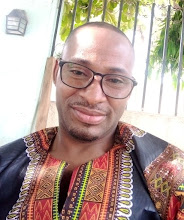The Ngas people of
Plateau State are known to be warriors and highly cultural and traditional
people. Part of the things that characterized their unique lifestyle is music
and entertainment. Whatever the season of the year is, there is always a form
of music and entertainment that accompany it. Music is one of the major
instruments used to bind the hearts of the people to their cultural norms and
creates the sense of belonging and meaning.
Music fuses into both the
religious and social life of the Ngas people and they carry it with them to
other parts of the world. As such, music is used during worships and sacrifices
to Nen (God), it is also the main
form of socializing during festivals like Pusdung
(Ngas festival of Arts and Culture), Mos
Tar, Mos Lun, among other
festivals as well as farming seasons and dry seasons. During celebrations like
weddings or funerals or when men go out hunting or during wars, music is
embedded in the fabric of the Ngas life.
There are different types
of musical instruments used to convey cultural and social meaning and how they
play out in the overall life of the Ngas people. These instruments have been
crafted, horned, and modified from one generation to another and few people
specialize in playing them. Some of these instruments are used only during
sacred worship or sacrifices while others are for entertainment. Some are
seasonal while others are played all year round.
Some of the common
instruments of music and entertainment in Ngasland are: xylophones, flutes,
horns, Ndengdeng, drum (banga), kulit, metallic dancing kits, etc.
Kulit is one of the
musical instruments of the Ngas people. It is an aerophone instrument that
possess the characteristic blend of a flute and whistle. It is made from
mahogany tree call Ting Tan in Ngas
language. The Igbo’s call it Oja.
Historically, Kulit is
used in Ngas land for several purposes but mainly as a musical instrument and
also for communication. According to the Legendary Ngas music icon, Nde Dantala
Jatu Dewan, Kulit is used for music as well as communication. During an
interview on Rhythm 93.7 FM Jos on the 20th February, 2020, he said
that it is used when a “Ngas man is missing or lost in the bush, you use it to
invite him”. Kulit is also used as a “signal to call on everyone who is in war
to come to a particular point”.
What it means is that
there are times that men get missing in the bush, especially when an individual
cannot find his way back home or to converge at a designated location. During
such times, Kulit is sounded so that the person who is lost can follow the
sound and meet up with his brethren.
During wars, it is used
to lunched an attack on the enemy or a call to retreat. It is also a tool to
change strategy if the war is not going the way it was thought of. It is important
that everyone who is at a battle field also pays attention so that the direction
to advance or not is made known at all times.
Other uses of Kulit are
for making announcements in the village. Once it is sounded, peoples’ attention
is called and the announcer will proceed to pass the message verbally. Usually,
the Ngolong (chief) will either pass
a message directly to his servants to pass it across to the people or when he
summons the people or a select group to come to his palace.
Kulit is used as one of
the musical instruments for entertainment. Because of its unique sound, it
comes to play during displays or when it is used as a signal to dancers to
change steps or just to make statements that only the dancers or the people
familiar with it understands.
Kulit is used to even
communicate with dogs when hunting. Once it is sounded, the dogs will run to
the direction of the sound to meet the hunter. This is so important because the
dogs have been taught to listen and follow the intention of the owner.


No comments:
Post a Comment